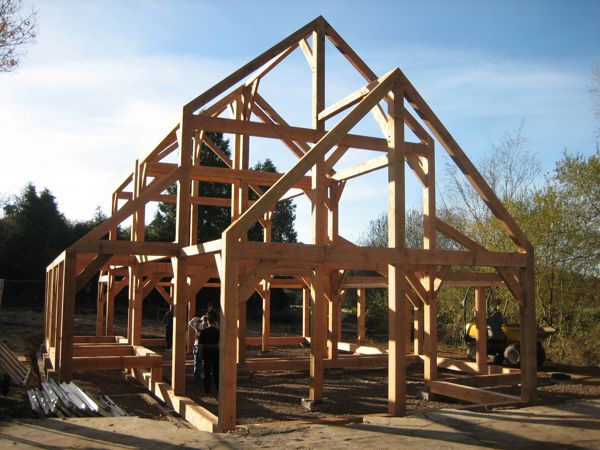Carbon, trees and forests

There are two ways to reduce the level of carbon dioxide in the atmosphere. We can reduce the amount we produce or we can develop ways to capture and store it. Trees have the unique ability to do both.
Forests and climate change
Forests help us address climate change by reducing the amount of greenhouse gases in the atmosphere. They do this by absorbing carbon dioxide (CO2), using the carbon (C) to produce sugars for tree growth and releasing the oxygen (O2) back into the air.
As trees grow, they store carbon in their leaves, twigs and trunk, and in the soil around them. The Welsh Forest Resource has an important role not only in this sequestration of carbon, but also in the provision of timber and wood products as a low-carbon substitute for other products such as concrete and steel.
Adapting to the changing climate
The Welsh Forest Resource and the millions of trees in our parks, gardens, towns and wider landscape play an important role in helping us adapt to the effects of our changing climate. We need to make sure that our trees and the Welsh Forest Resource can respond and adapt to predicted climatic change.
Key actions for the future
There are six key actions to protect what we have, and to make sure we can adapt to the new threats and opportunities that climate change will bring, while still maintaining and expanding a sustainable forest and woodland resource:
- Protect what we already have
- Reduce deforestation
- Restore the world’s forest cover
- Use wood for energy
- Replace other materials with wood
- Plan to adapt to our changing climate
Finding out more
You can find out more by following the links. The Forestry Commission climate change pages provide all of the up-to-date information and evidence relevant to the global role of forestry and in the UK context. You can watch the video A Convenient Truth as a great introduction to the topic and explore the communication and learning resources provided.
The UK and Welsh investment in improving our evidence base and improving our knowledge can be found by visiting the research on forestry and planning for the future pages.
Action in Wales
Here in Wales we are taking action on greenhouse gas emissions by promoting the role of new woodland creation in the right places. We also promote product substitution by replacing more carbon-rich building materials (locking up carbon in the long term) with wood and wood products and the use of fibre as an energy source.
The Welsh Government support the innovation of wood products through ‘Wood Source Wales’, a key part of the Wales Forest Business Partnership.
Reducing net greenhouse gas emissions
Creating new woodland and bringing more woodlands into active management will make a positive contribution to mitigating climate change. If timber is harvested and used for construction or manufacturing, most of the carbon in the timber remains locked up for the life of the product.
Carbon can be locked up for as long as several hundred years when it is used in products such as the beams of old buildings or furniture. Certain woodland management techniques are most likely to deliver long-term reductions in net greenhouse gas emissions. These include:
- Growing enduring timber for construction and manufacturing
- Using smaller diameter timber for wood fuel
- Reducing soil disturbance
Other ways in which woodland can help Trees and woodlands can help our communities adapt to our changing climate. New woodland creation in the right places helps contribute to flood risk management and diffuse pollution control.
We have a prioritised water plan in action on the Welsh Government Woodland Estate. This involves 22 catchments prioritised for investment to improve riparian habitat quality and drainage infrastructure to cope with the type of extreme weather events we are expected to experience more often.
Trees in urban environments
Increasing tree cover in urban environments close to communities is a definite ‘win-win’ option. There is a deep link between our quality of life and the quality of our environment, and trees and woodlands have a vital role to play.
Visit the link for our publication summarising our study gathering evidence on benefits of increasing [Wales’ Urban Tree Canopy Cover] and the practical work we are engaged in with local authorities.
Improving our environment
Trees and woodlands close to where people live not only provide opportunity for outdoor recreation and space for education and inspiration, but they also improve the air that we breathe and provide shelter, shade and give our wildlife places to breed and find food and rest.
We work hard to make sure that the woodland we manage is accessible, safe and well managed, providing us all with great places to visit.
Threats to woodland
Woodlands and trees are under increased threat as a result of our changing climate. These threats include increased risks from changes in water availability (too much or too little), wind damage and conditions that favour woodland pests and pathogens, thus increasing the incidence and severity of disease.
We need to make sure our existing woodlands, as well as those that are planted in future, can continue to play a part in reducing net carbon emissions.
Further information
You can find out more about how to help woodlands adapt to our changing climate by following the links on planning for the future.
You can contact the UK forest and climate change Management Team by sending your enquiry to climatechange@forestry.gov.uk.
If you would like to contact the Sustainable Forest Management Team in Natural Resources Wales you can send your enquiry to sfmt@cyfoethnaturiolcymru.gov.uk
